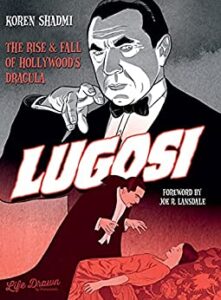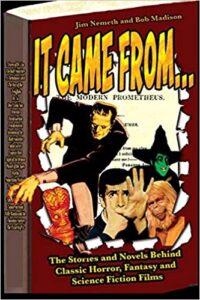Lugosi: The Rise and Fall of Hollywood’s Dracula by Koren Shadmi
Life Drawn, 2021
ISBN-13: 978-1643376615
Available: Paperback, Kindle, comiXology ( Bookshop.org | Amazon.com )
Lugosi: The Rise and Fall of Hollywood’s Dracula is a graphic biography of one of the most recognizable men to portray Dracula, Béla Ferenc Dezső Blaskó, or simply Bela Lugosi. Shadmi tells the story of the young Bela fleeing Hungary after a failed Communist revolution in 1919. Upon coming to the United States, he “reinvents himself”, acting on stage and screen, eventually being cast as the titular vampire count in 1931’s Dracula. However, Lugosi’s constant vices and failed marriages haunted him throughout his career and beyond.
Shadmi did not hold back with Lugosi, opening with Lugosi in 1955 admitting himself to the Motion Picture and Country House Hospital in an attempt to defeat his heroin addiction. From there, we are taken to Lugos, Hungary in 1893 where a young Bela is acting in a field after becoming entranced by a traveling acting troupe that recently left. A group of bullies attack him, and then he returns home to his strict, banal parents. Soon after, Bela faces the death of his father and the hatred of his mother. At this point, he takes some of his possessions and leaves home. The story then switches back to Bela in the hospital where he is facing detox, hallucinations, and the physical and emotional pain that tortures him. The rest of the book follows in this manner, going from sepia colored modern day to crisp black and white telling of the past. More of Bela’s past is revealed, including affairs, drug addiction, arrival in the United States, struggles with Hollywood, his rivalry with Boris Karloff, acting for the notorious Ed Wood, Jr., and more, while Lugosi faces his demons in the hospital. It is a powerful biography fans of Lugosi should read.
Shadmi has become one of my favorite creators. Lugosi: The Rise and Fall of Hollywood’s Dracula will be another graphic biography on my bookshelf. Highly recommended.
Reviewed by Lizzy Walker







Follow Us!